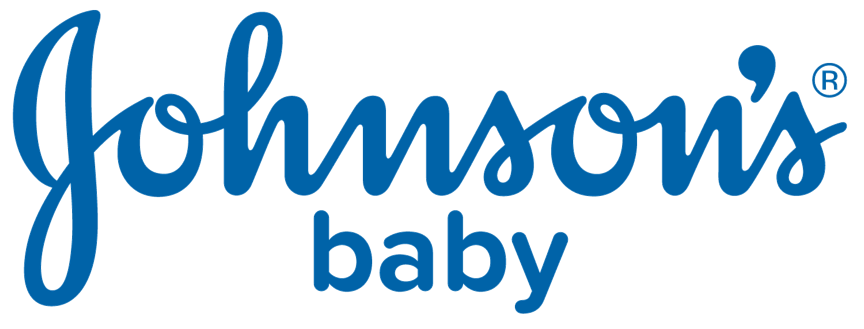Baby Massage Techniques
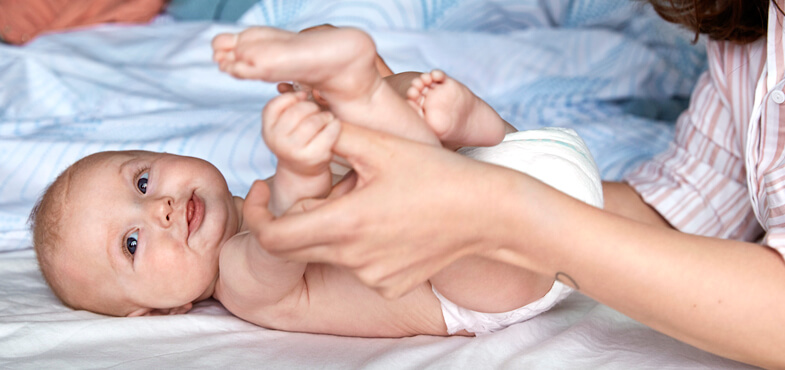
Baby massage – tips and techniques
Baby massage is a great way to spend quality time and bond with your new baby. Before they can understand words, babies communicate with us through touch – such as settling down after a nice cuddle with mum or dad. Baby massage acts as an extension of these comforting touches.
Your newborn might seem delicate, but that doesn't mean you need to hold off when it comes to massaging them. However, you may want to wait until after their six-week check just to make sure any possible development issues, such as hip dysplasia, have been picked up.
Find out more about how to massage your baby and how it could benefit both you and your little one.
Baby massage benefits
Baby massage has lots of benefits for your little one. You can use baby massage to help relieve things like constipation, colic, wind and cramps, as massaging a baby's tummy may help stimulate their circulatory and digestive systems. A calming massage may also help baby get better sleep – which is good news for them and you.
As well as the benefits for your baby, many new mums and dads find that massaging their baby helps strengthen their bond and gives them a better understanding of their baby's needs.
Find out more about baby massage benefits.
Baby massage – getting set up

Pick the right time
Pick a time when your baby is awake and alert, not too hungry or too full. This way they should be ready to interact with you during their massage.
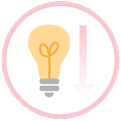
Create a cosy atmosphere
Ensure the room is warm and the lighting is not too bright. A nice, cosy atmosphere will help baby feel safe and relaxed – the perfect setup for a massage.
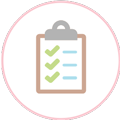
Have what you need ready: oil, a towel, a clean nappy and clothes. That way, you won’t have to break off the massage to fetch anything or leave your baby unattended. It means you can focus solely on the massage, your communication, and your time together.
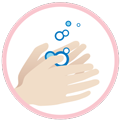
Prepare your hands
Wash your hands and remove any jewellery. Having clean hands will be better for your baby’s skin and removing jewellery can help prevent catching or hurting their baby-soft skin.

Find a good location
Find a safe and comfortable place to do the massage, positioning your baby so they can see your face clearly. Lay them on their back so you can keep eye contact and monitor their responses. You could place them on their changing mat or bed so they’re in a familiar spot where they know they can relax.

Make sure you’re calm and relaxed
Before starting the massage, take time to relax with a few full breaths. This can help your baby relax too so you both get the most out of your massage time.
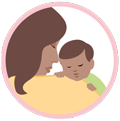
Dress or undress your baby
Babies are different, changing all the time. For instance, young babies may feel more secure if most of their clothes are left on and they feel close to their parent’s body. You can choose whether to take off their nappy or not, but it can be a good idea to at least loosen it when massaging baby’s tummy.
Start slow
When you start your massage, keep your movements slow and gentle. Start near their head and gradually move down to their feet, rubbing each body part softly.
Watch how baby reacts
There's no specific recommended time limit for a baby massage, so you can keep going as long as baby is happy. For example, some babies don't like to lie on their tummy for too long, so you might want to keep a back massage shorter than any other massages.
If they seem unhappy, or become restless, stop the massage and try another time. If they’re squirming or turning their head away it’s usually a sign your baby has had enough.
Baby massage oil – which one should you use?
When you start massaging your baby, you may find that baby massage oil helps to reduce friction and makes the massage go more smoothly.
If you use oil, there are a few key things you need to consider:
Make sure you use an odourless and edible oil in case any gets in your baby's mouth.
Use an oil that is gentle on skin – a baby's skin is at its most delicate when they're first born.
You only need to apply a small amount of oil to your hands – just enough to help your hands glide over your baby’s skin.
The NHS recommends avoiding using oil when massaging your baby for the first month as this gives the skin time to develop its protective layer.
There are several oils you could choose:
Emollient-based oils – emollients are often used to help lock in moisture and hydrate skin. Products like Johnson's Baby Oil contain emollients and are free of dyes, parabens, phthalates, and alcohol. It's all part of 125 years’ worth of research, making our products gentle on delicate baby skin.
Cold-pressed oils – some parents prefer cold-pressed oils. These typically contain fewer impurities than other cooking oils.
Mineral oils or petroleum-based oils – if your baby has dry or broken skin due to dermatitis or eczema, these could be a good option, thanks to their moisturising properties.
Vegetable oils – these may be gentler on your baby's skin than other kitchen oils.
Remember, not all oils are a good option for baby massage. Some cooking oils, like sunflower, mustard and olive oil, may damage the skin's protective barrier, leading to irritation and redness.
The best baby massage oil for your little one will depend on their skin. Test out your oil on a small patch of skin before using it in a full massage to make sure they don’t have an adverse reaction to it.
Baby tummy massage for constipation and wind
Benefits of a baby tummy massage
Giving your baby a tummy massage is both relaxing and hugely beneficial. You can use a tummy massage to ease constipation, wind and colic. Stroking and massaging your baby’s tummy will also help move trapped air and any other blockages towards the bowel, so they’re easier for baby to pass.
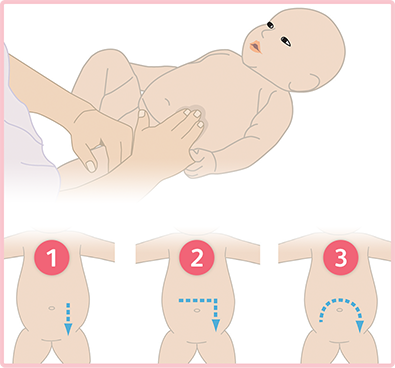
How to massage a baby's tummy
A popular technique for baby tummy massage is the 'I love you' method:
Begin with a resting hand.
Make a single downward stroke with your right hand on the left side of your baby's tummy (your right).
Make a backward, sideways 'L', going from your baby's right to the left side.
Make an upside-down 'U', going from your baby's lower right side, up, across and down the left side of the baby's tummy.
Say the words 'I love you’ as you go through the strokes.
Baby chest massage
A gentle chest massage can help relieve congestion problems when your baby is under the weather. A baby's chest can be very sensitive, so keep your touches light and pause every so often with resting hands.
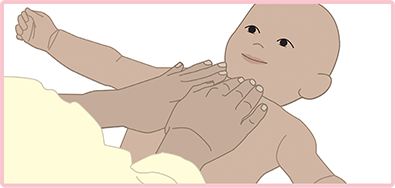
How to massage a baby's chest
With both hands at the centre of baby’s chest, stroke out to the sides as if flattening the pages of a book.
Keeping contact with your baby, glide your hands down, around and meet in the centre again.
Touch relaxation
Touch relaxation is an excellent massage technique you can use at any stage of your baby's development. Sometimes babies hold a lot of tension in their bodies, and this technique on the arms and legs encourages your baby to relax.

How to use touch relaxation massage techniques
Gently mould your hands around your baby's arm or leg, asking your baby to relax.
Using a calm voice, repeat the word ‘relax’.
When you feel your baby responding, reward your little one with positive feedback, a smile and a kiss.
Baby hand massage
Babies will often clench their fists for the first few months until their nervous system develops12. Giving your baby a hand massage is a great way to show them how to relax their hands and avoid a tension build-up from all that clenching.
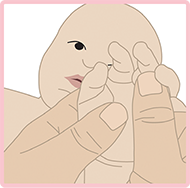
How to give a baby a hand massage
Using the pads of your thumbs, gently open their hand.
Roll each tiny finger between your index finger and thumb.
Finally, stroke the top of the hand from the wrist to the fingertips.
Baby face massage
Babies mirror your movements and expressions, so a facial massage is a lovely moment to make eye contact and have a happy time together.
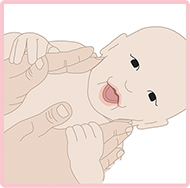
How to massage a baby's face
Make small circles along your baby’s jaw with your fingertips.
Slowly move along the baby's cheeks and forehead in the same motion.
Baby back massage
A soothing back massage can help strengthen your baby’s head, neck and shoulders, helping them to support their head. It’s a great opportunity to encourage tummy time – but remember that not all babies like being on their tummy.
As a result, you might find that you give back massages less frequently or spend less time doing them compared to other massages. If you still want to try a back massage, you could try doing them with baby in a sitting position as they get older.

How to give baby a back massage
Lay your baby on their front.
Start with both hands together at the top of the baby's back, at right angles to the spine.
Move your hands back and forth, in opposite directions, going down to their bottom, then up to the shoulders.
Repeat this movement a couple of times.
Swoop your hand from their neck down to their feet.
Newborn baby massage
Your newborn may seem delicate, but that doesn’t mean you can’t start gentle massaging shortly after birth. In fact, regular massage helps you grow your bond and leads to happy, healthy baby development. Here are some baby massage techniques you can try with your newborn that won't overwhelm them:
Nurturing touches
Touch is a powerful way to communicate your love to your baby. In the first few weeks, use slow and positive strokes. Try not to spend too much time massaging one area. Newborn babies may find their senses over-stimulated and seek solace in the arms of their parents for the first few weeks. Some newborns may just want a gentle stroke down their backs, over their clothes.
Resting hands
Begin massaging by just 'resting your hand' on your newborn baby. You can use this resting hand technique when massaging any area. It's a great way to introduce your baby to feeling secure and enjoying touch. Plus, it can help break up massage sessions if needed.
Leg massage
For the first few times, you may just want to massage your baby's legs until they get used to the sensation of being touched and stroked. The legs are an excellent place to start introducing massage because your baby will be used to having their legs touched during nappy changes.
Foot massage
Babies usually love having their feet massaged but watch your baby's reactions in case of sensitivity.
Gently squeeze and roll each toe between your thumb and index finger. Using alternate thumbs, stroke the top of the foot from toes to the ankle. Repeat this action several times if your baby enjoys it.
Tummy massage
Once your baby's umbilical cord has healed, a gentle massage on the tummy can help with digestion and tummy troubles, like trapped wind and colic.
Start by making contact with your baby's tummy with a reassuring, relaxed hand. If your baby is happy, you can move on to making gentle paddling strokes, with one hand following the other.
Back massage
Skin-to-skin contact can enhance the bonding experience between baby, mum and dad. Holding the baby close to your chest, massage your baby's back beginning at the neck, swooping down to their bottom.
Six weeks plus massage
Some parents choose to wait until their baby has had their six-week check-up before starting more regular massaging. This allows doctors time to identify any developmental issues such as hip dysplasia, which may impact the type of massage techniques suitable for your little one. Once your baby has had their check-up, you should be okay to start using any of the massage techniques described in this article.
Six months plus massage
As your baby reaches six months old, they'll start to become more active. All that extra wriggling, sitting, crawling and rolling will mean you have to adapt the way you tackle massage time.
You can also try including fun songs, rhymes, or games to keep your little one entertained and engaged.
Massage can help develop your baby's self-confidence and ability to relate to others. It can also help with their coordination and strength as they prepare for more milestones such as walking.
Here are some of the massage techniques you can try as your baby reaches that six-month mark:
Legs – Rolling
Leg rolling is a fun activity that increases body awareness. Once your baby shows that they enjoy the movement, you could introduce a song. Remember to slow the pace of your song down so that your baby can join in.
With your hands, roll down baby's leg from thigh to ankle.
If your baby has longer legs, adapt this stroke, rolling from knee to ankle.
Back
If your baby prefers to sit upright, you can massage them in this position. It'll help prepare them for sitting unsupported and strengthen their back muscles. Plus, it can be soothing as part of a calming bedtime routine.
Swoop one hand after the other from neck to buttocks and down again.
Your baby might want to play with a toy while you're massaging them.
Gentle movements
Gentle movements are a set of simple exercises that can help develop your baby's coordination, align their spine and keep them flexible. One example is called Cross-Cross-Cross-Open:
Cross your baby's arms at the chest three times, alternating which arm is over and under.
Gently stretch their arms out to the side.
The rhythm is cross-cross-cross-open.
Repeat.
Finish with a kiss and a cuddle
Through massage, you can gain increased awareness of how your baby communicates and ideas on supporting your baby in their first few months. You and your baby will discover what is best for you both. It's important to be mindful that massage is something you do with, rather than to, your baby.
Frequently asked questions
Should babies be massaged daily?
You can massage your baby every day, but if you don't, not to worry. Take cues from your baby on when they want to be massaged and when they don't. You could make it part of your morning or bedtime routine or just use it every few days when you have some quiet time.
Is coconut oil safe for babies?
Coconut oil, especially virgin coconut oil, is safe for baby skin. Thanks to its natural lack of perfumes and chemicals, it can help moisturise and hydrate sensitive skin and is often recommended for eczema. However, there isn't enough research into coconut oil to determine whether it's the best massage oil for babies. Most research has focused on its use for eczema and dermatitis, not massage.
Emollient-based oils, like Johnson's Baby Oil, soothe the skin, helping to hydrate and moisturise.
What should I do if my baby cries during a massage?
Watch your baby for cues throughout your massage. If they start to cry or show any signs of discomfort, stop immediately. You can always try again later once they've calmed down.
About this article
The information in the article is based on expert advice from trusted medical and government sources such as the NHS and National Childbirth Trust (NCT). Always consult a medical professional for full diagnosis and treatment advice.
